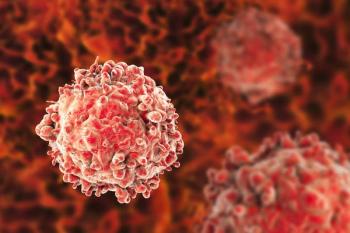
Ira Winer, MD, PhD, Reviews Results of the ARTISTRY-1 Trial in Ovarian Cancer
Ira Winer, MD, PhD, FACOG, spoke about patients with pretreated platinum-resistant ovarian cancer treated with nemvaleukin alfa plus pembrolizumab in the phase 1/2 ARTISTRY-1 trial.
During
Transcript:
The ARTISTRY-1 trial in and of itself was a phase 1 trial that included multiple different types of patients with different types of [solid] tumors. It was a combination of a dose-escalation design with nemvaleukin alfa, as well as dose-expansion [phase that examined both the] single agent but also dual agents of nemvaleukin alfa plus pembrolizumab. There were multiple different arms, but to go into the details of the entire trial is extensive.
If we want to focus specifically on ovarian cancer, there were a number of patients who were treated over the entire phase of the trial. The specific patients that we were focusing on [in the presentation at SGO 2022 were those] treated with nemvaleukin alfa plus pembrolizumab, and that was because ovarian cancer currently does not have an immuno-oncology FDA approval. There were a total of 16 patients, although there were 15 patients who were finally included in our analysis, who were heavily pretreated, and the vast majority [had serous tumors] although there were a couple of other tumor types.
Prior [lines of therapy] ranged anywhere between 3 and up to 9 or so. The number of prior lines [of treatment] for the vast majority, or over 50% of the patients, was greater than 5 lines of prior chemotherapy. That was a heavily pretreated group of [patients with] platinum-resistant disease. The overall findings were that we had a significant objective response rate as well as what I would call clinical benefit. The reason is there were 4 patients who had objective response, 2 with complete responses and 2 with partial responses. One of those partial responses was unconfirmed at the time of the publishing of this abstract, it’s been since confirmed. Of those patients who had objective responses, 3 were on [treatment] for a significant amount of time to greater than almost 2 years. If we’re looking at percentages, the objective response rate was about 30% or 28.5% to 29%. The control rate, though, was even more significant [at] over 70%. In fact, a couple of our patients did not have stable disease for well over a year.
Reference
Winer I. Clinical outcomes of ovarian cancer patients treated with the novel engineered cytokine nemvaleukin alfa in combination with the PD-1 inhibitor pembrolizumab: recent data from ARTISTRY-1. Poster presented at: 2022 SGO Annual Meeting on Women’s Cancer; March 18-21, 2022; Phoenix, Arizona.
Newsletter
Stay up to date on recent advances in the multidisciplinary approach to cancer.





















































































